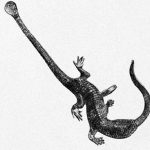Drones and Light Aircraft
Drones and light aircraft have been very effective in helping us discover things that would never have been discovered if it weren’t for the technology. Today, they are being used in Saudi Arabia, which is a country that is rich in history. These crafts have already found some pretty incredible pieces of history that have been hidden for centuries. It is The Nabataean Civilization.
The Nabataean People
The Nabataean people once inhabited the area where the drones are currently searching. They lived like nomads for years before settling down to start a life that focused on trade and agriculture. During this time, they also built incredible structures, and sacred sites Who these people were is a mystery. During the 4th century B.C., many nomadic tribes wandered through the Arabian Desert looking for water and pastures for their herds. The Nabataeans people were one of the tribes, and where they came from is a mystery. Some believe that they came from Yemen, but they didn’t share the same language, scripts, or deities with the people from Yemen. Others think that they came from the eastern side of the Arabian Peninsula, known as Hejaz. This makes more sense since the Nabataeans worshiped the same gods as the Hejaz locals.
A Rough Landscape
Much of the Nabataean presence has gone undiscovered because of the rough landscape where they chose to settle. It was so rough that the Romans retreat during an invasion. For years, archaeologists never discovered these artifacts because the terrain was so unforgiving. To find answers to their questions, they have begun sending drones to the area.
Building a Community
The Nabataeans made a significant impact on the area when they settled there. They built a city, which we know today as Petra, Jordan. They built it into a stunning metropolis in the 1st century B.C., and over 20,000 people lived there. Also, they created a city called Hegra, which is known today as Mada’in Saleh. It was their secondary capital and the second-largest settlement. Within their borders, they created their own culture. They spoke a version of Arabic, but they didn’t write that way. Their writing was actually a blend of Arabic and Aramaic. It was their alphabet that inspired what is today known as Arabic script.
Secretive
The people were very secretive and didn’t want outsiders to know much about them. They followed well-guarded trade routes, and they never shared the origin of where the goods that they sold were located. They also had a very strong army. There were about 10,000 warriors protecting the area. Also, they rejected the idea of agriculture and permanent housing. They also used their geographical location to their advantage. The landscape was so unforgiving that the invaders didn’t know how to survive, so they couldn’t get to the area to fight.
God Blocks
The Nabataeans carved blocks and pillars to represent the gods to whom they prayed. Experts today know them as “god blocks.” They would start by chipping away at a cliff or hilltop and then carve human-like faces into them.
Rebecca Foote
Rebecca Foote led the survey for the Royal Commission for Ul-Ula, and in 2019, she explained to BBC why her excavators focused only on using hi-tech devices to find artifacts. She says that until recently, the only option that archaeologists had was excavation. She says that we know a lot about the first to the third millennium B.C., and we know a lot about ancient Egypt and Mesopotamia. Since we don’t know much about the Arabian peninsula, Rebecca believes that it is time to learn as much as possible, and using hi-tech gadgets is the best way to do this.
The Benefits
Thanks to the high-tech aircrafts owned by the Royal Commission team, they can fly right over the landscape and take photos of the tribe’s former territory. Since the area is difficult to get to on foot, this is the best way for Rebecca and her team to see things that have been a mystery for thousands of years.
The Success of the Project
Experts in the Middle East are using drones to unravel the secrets of a mystery civilization. So far, the team has been able to fly over and take photos of half of the estimated 11,500 Nabataean sites in the area. They have also photographed many historical sites, which has helped the researchers create a map of the places that they need to see.
More Work To Be Done
While the drones and light aircrafts have helped the experts learn a great deal about the area, their job is far from over. According to Rebecca, this is just the beginning. Now that they have been able to create a map of the places that need to be excavated, they know exactly where to go. This will save them precious time. When they know the areas that are rich in artifacts and those that aren’t, they will know where to go and which areas aren’t worth excavating.


